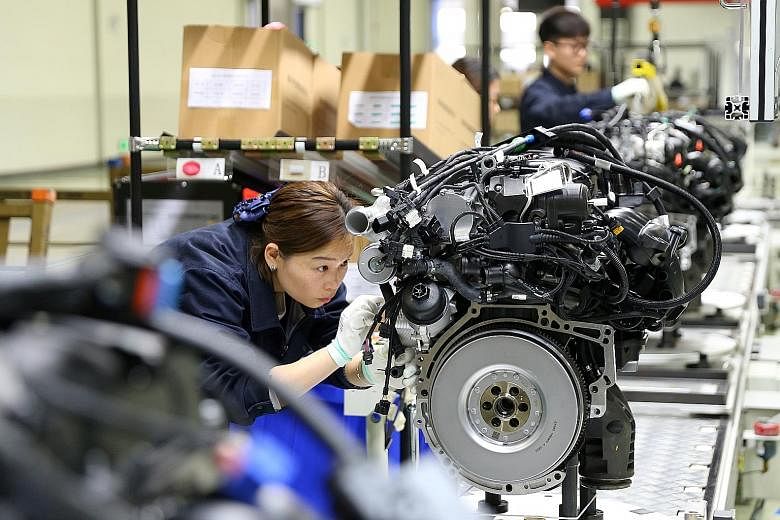BEIJING • China's industrial output growth slowed unexpectedly to a more than 17-year low last month, while investment also cooled, in the latest sign of weakening demand as the United States ramps up trade pressure.
Hours after the weak data was released, China's central bank announced 300 billion yuan (S$59 billion) in fresh support for smaller banks.
Industrial output grew 5 per cent last month from a year earlier, data from the National Bureau of Statistics showed yesterday, missing analysts' expectations of 5.5 per cent and well below April's 5.4 per cent. It was the weakest reading since early 2002.
Fixed-asset investment also grew less than expected, reinforcing expectations that Beijing will need to roll out more growth-boosting measures soon.
"The weakness in May's and April's activity data suggests that economic growth is likely to slow this quarter and increases the likelihood of additional monetary easing in the coming months," Capital Economics said in a note.
Vice-Premier Liu He on Thursday stoked expectations of more stimulus as the US-China trade dispute intensifies, urging regulators to do more to boost the economy and saying that Beijing has plenty of policy tools it can use.
Despite a slew of support measures since last year, China's cooling economy is still struggling to get back on firmer footing, and investors fear a longer and costlier trade war could trigger a global recession.
Yesterday's data showed that domestic demand remains sluggish, as suggested by weaker-than-expected import and bank lending data over the last week and gloomy factory surveys last month.
Fixed-asset investment rose 5.6 per cent in the January to May period from the same period a year ago, decelerating from the 6.1 per cent tipped in the Reuters poll and 6.1 per cent in the January-April period.
Private sector fixed-asset investment, which accounts for about 60 per cent of total investment in China, also showed signs of losing momentum. It rose 5.3 per cent, compared with a 5.5 per cent rise in the first four months of the year.
Infrastructure investment grew 4 per cent, slowing from 4.4 per cent.
Analysts have been watching closely for signs of a rebound in infrastructure investment as Beijing ramps up spending on road, rail and port projects, which would boost construction-related industries.
Real estate investment, a key economic growth driver, also showed signs of fatigue. It rose 11.2 per cent in the first five months, slowing from 11.9 per cent.
Retail sales bucked the downbeat trend, rising 8.6 per cent last month from a year earlier and picking up from a 7.2 per cent rise in April, which was at a 16-year low.
Analysts surveyed by Reuters had expected a rebound to 8.1 per cent, but some said that it was likely due to higher inflation rather than any turnaround in weak consumer confidence.
Earlier this week, China's auto association reported the worst-ever monthly drop in sales in the world's biggest vehicle market last month as the economy slowed and provinces implemented tougher emission standards.
REUTERS
SEE BUSINESS
Trade war will hurt China more, says top US economic adviser

